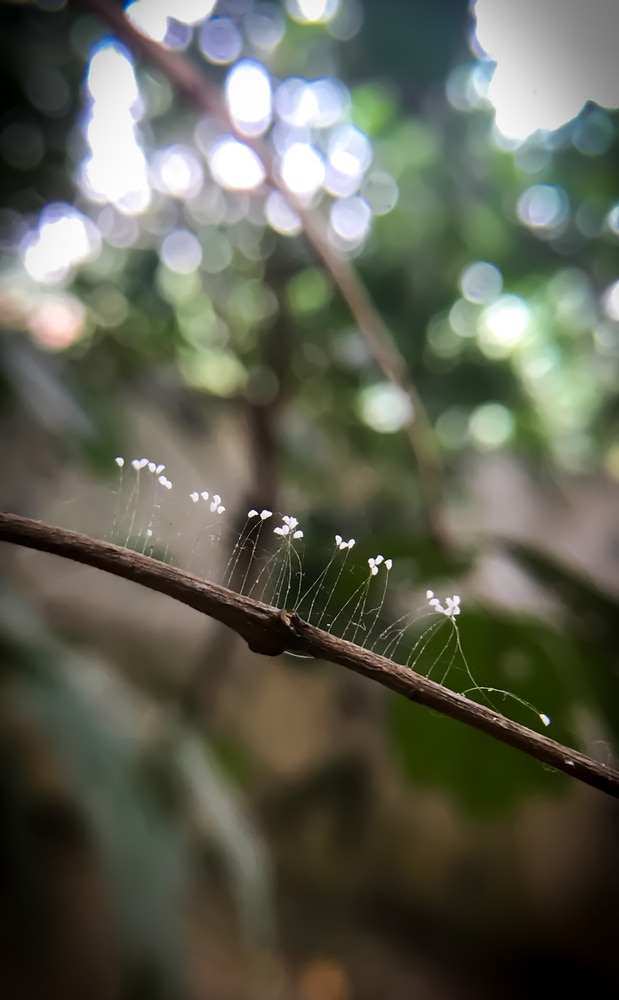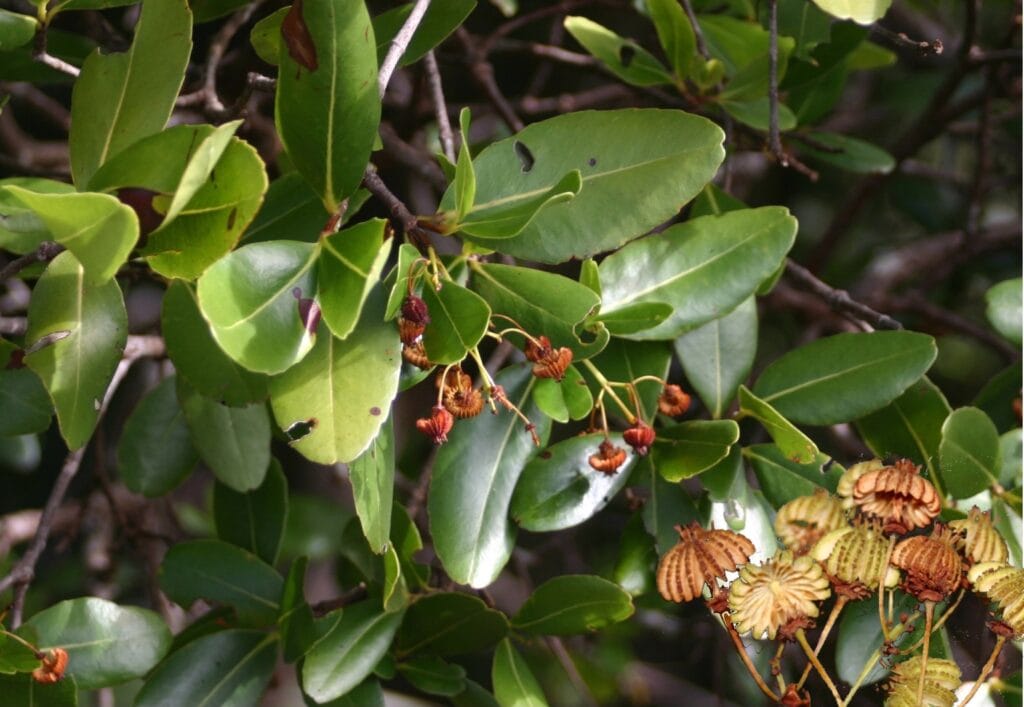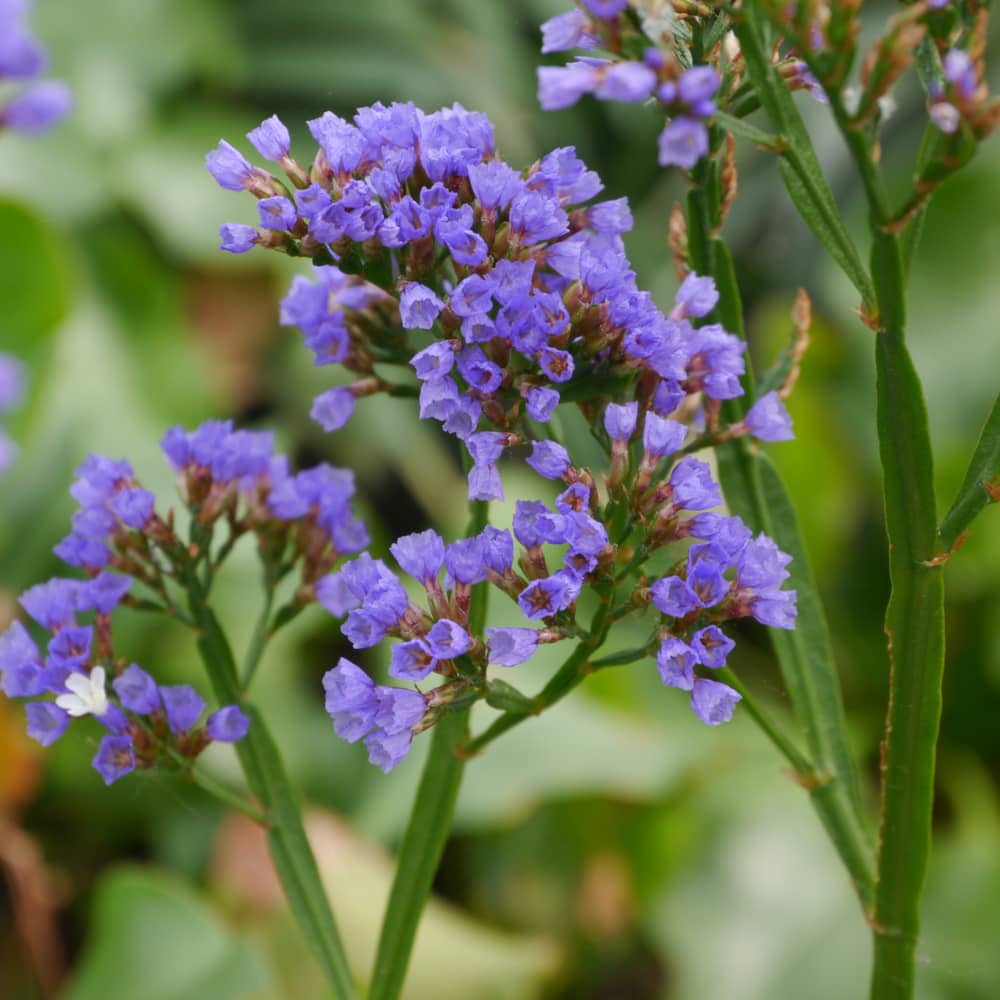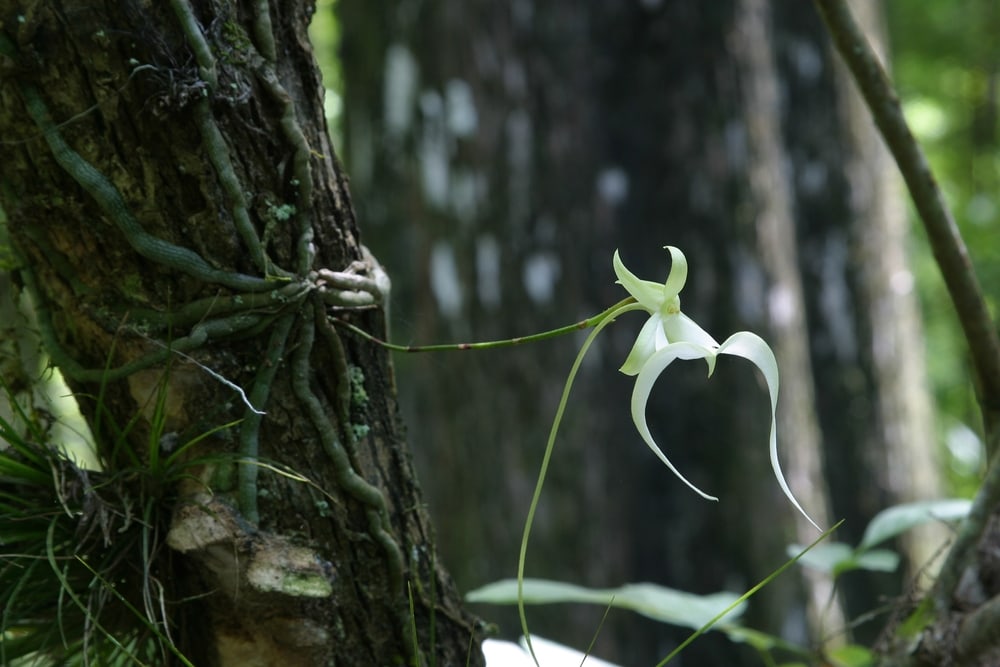Outforia Quicktake: Key Takeaways
- Some rare flowers are endangered due to habitat loss, human causes, or competition from other plants and animals.
- Certain rare flowers only bloom once in decades or hundreds of years.
- Many rare flowers are on the IUCN Red List as Critically Endangered or Extinct in the Wild.
- Examples of rare flowers include the Jade Vine, Youtan Poluo, Chocolate Cosmos, and Corpse Flower.
- Conservation efforts are underway for some rare flowers, but many remain threatened or critically endangered.
Some flowers are rare because the plant that bears them is endangered. This can be due to habitat loss, human causes, or competition from other plants and animals.
Others are rare because they only flower once in decades, or even hundreds of years!
Many of the wild flowers below are on the IUCN Red List as Critically Endangered, or even Extinct in the Wild. Extinct in the Wild means you will only see them in botanical gardens or grown in captivity.
Many are endangered as they are endemic to only one small geographical area, like an island. They are threatened by such factors as habitat loss, introduced animals, human collectors, and pollution.
Read on for a selection of the rarest flowers from around the globe.
1. Jade Vine (Strongylodon macrobotrys)

The Jade Vine is a hauntingly beautiful flower which glows luminous at dusk! This attracts its pollinators, which are bats.
It’s an evergreen climber that can grow up to 13m (14 yd) long, climbing up the trunks of trees. The flowers are drooping and a fantastic jade or turquoise color, hence the name. It grows only in the rainforests of the Philippines. It’s endangered in the wild.
Once a bat has brushed its head on the flower and transferred the pollen, the Jade Vine grows its fruit, which are the size of a melon!
2. Youtan Poluo

The Youtan Poluo or Udumbara Flower is said to only bloom once every 3000 years! This is likely to be an exaggeration, though the flowerings are sporadic and indeed rare. It has, however, been spotted flowering in several locations in China and Asia in 1997 and in 2013.
The tiny, delicate white flowers grow parasitically on other plants, such as palms. They are only a few millimeters tall. They let off a pleasant scent like sandalwood. They have no leaves.
According to expert botanist Dr. Vo Van Chi, it is still uncertain whether Youtan Poluo is a moss or a fungus. It is so rare, it has not even been given a scientific name yet.
3. Chocolate Cosmos (Cosmos atrosanguineus)

This deep red-brown flower smells of chocolate cake! It’s extinct in the wild in Mexico, where it comes from. You can grow Chocolate Cosmos from seeds sold in garden centers and online, so you too can have a go at preserving a rare flower.
The Chocolate Cosmos’ Latin name means “harmony,” “dark,” and “blood colored.”
Just keep it away from squirrels – they love to snack on its tuberous roots! It’s a great source of nectar for insects such as butterflies.
If you’re planning to take care of one, check out this video on how to care for and grow a Chocolate Cosmos.
4. Corpse Flower (Amorphophallus Titanum)

This strikingly rude-looking flower is also known as “Titan Arum.” The Corpse flower hails from the rainforests of Sumatra. It’s endangered in the wild and rare in captivity!
There are only a few specimens worldwide in specialist glasshouses. One specimen is at Kew Gardens in London. There are several at the Smithsonian Gardens at the US Botanic Garden.
Not only does it look like an erect phallus, it reeks of rotten flesh! This is why it’s named the corpse flower.
The flower blooms only rarely. When it does, it is 3m (9.8 ft) tall, making it the biggest flowering structure in the world!
The flower spike even produces heat to help the smell travel. This attracts meat-eating pollinators to the meat-colored flower. The flower lasts for roughly 24 hours.
5. Gibraltar Campion (Silene tomentosa)

This flower came back from the dead!
The Gibraltar Campion was declared extinct in the wild in 1992 due to habitat loss. Happily, it was rediscovered growing in 3 places in Upper Rock Nature Reserve in 1994. After a successful breeding campaign, it yet again grows on the Rock of Gibraltar.
No one really knows for sure what pollinates the Gibraltar Campion. It only releases scent at night. Harvester ants have been observed carrying off its pollen. It doesn’t seem to reproduce that easily in its native habitat either!
6. Ghost Orchid (Epipogium aphyllum)

The eerie looking Ghost Orchid is the rarest plant in Britain. It has no leaves, as it absorbs all its nutrients from its roots. It gets nutrition from parasitizing fungi that connect to tree roots. It has been declared extinct in the wild several times!
Ghost Orchids are found on average every 25 years, in seemingly random parts of Britain. They have been found in the Chilterns and West Midlands in deeply shaded woods. You can be imprisoned for uprooting one!
The story of the little girl who found one of the only specimens in 1926 is a great one. The little girl refused to part with her Ghost Orchid, despite a learned botanist begging her to donate it to science!
7. Attenborough’s Pitcher Plant (Nepenthes attenboroughii)

Named after famous broadcaster and TV legend David Attenborough, this carnivorous pitcher plant grows in the Philippines. It’s 1.5m (4.9 ft) in height. Its pitchers are 30cm (1 ft) across, making it the largest pitcher plant known to science.
It was discovered in 2009 and grows wild on only one mountainside in the Philippines. Soon after it was listed as Critically Endangered on the IUCN Red List.
Pitcher plants feed on insects, trapping them when they fall into the bucket-like flower, which is full of digestive juices.
8. Kraaifontein Spiderhead (Serruria furcellata)

There is only one example of the Kraafontein Spiderhead left in the wild. You can see why it has the name, looking very like a furry pink and white tarantula! It comes from South Africa’s shrublands.
This plant can live over 100 years. However, it is endangered due to urban development and degraded habitat. Over 99% of the population of this flower has been lost in the last century.
It can survive fires by resprouting from underground boles. It reproduces by letting ants carry its seeds away to their underground nests, where they are safe from predators.
9. Iris antilibanotica
This delicate blowsy iris comes from the Arab Republic and Lebanon. It likes to grow on inland rocky areas at a high elevation. It’s tough for such a pretty thing – quite often the slopes on which it grows are covered in snow!
It’s threatened by war, civil unrest, agriculture, and farmed animals as well as housing development. It lives on only one protected site in the mountains of Syria. It is a very rare flower even in captivity, and expensive to buy as a tuber.
One company online is selling the first tuber they have sourced in 44 years for $100!
10. Kadupul Cactus Flower (Epiphyllum oxypetalum)

The fantastic white Kadulpul Cactus flower comes from an epiphyte cactus. Epiphytes are plants that live on a bigger plant, like a tree.
This is a flower that’s rare because it only blooms for one night. Due to this, it is regarded as “the most expensive flower in the world.” It’s almost impossible to preserve the blooms as they quickly wither once plucked.
You can buy perfume made from this flower. It’s also called “Queen of the Night” and “Dutchman’s Pipe Cactus.” You can also grow it indoors as a tropical house plant!
Check out this cool time lapse of a Queen of the Night flower!
11. Jellyfish Tree (Medusagyne oppositifolia)

The Jellyfish Tree is the only member of its entire genus. Its natural habitat is the island of Mah in the Seychelles. Its name comes from the jellyfish-shaped fruits.
Researchers are studying the special way the Jellyfish tree spreads its pollen. This is not fully understood yet.
It’s an evergreen tree, with a fibrous bark that’s very distinctive. There are only two small patches of these trees on the island.
12. Guzmania Lepidota
This deep burgundy, shiny flower comes from Ecuador. Some experts believe it to already be extinct in the wild. Its forest home is threatened by logging. It’s in the bromeliad family, which can catch water in their thick leaves.
You can grow other species of Guzmania bromeliad indoors. They like dry heat and low humidity. They do not like too much sun!
As this species of Guzmania is so rare there are no photos of it.
13. Rothschild’s Slipper Orchid (Paphiopedilum rothschildianum)

This stunning striped orchid is a rare and expensive orchid to cultivate. It’s not too difficult to keep alive for the average gardener, however!
It’s critically endangered in its native Borneo, where it only grows in the rainforests on the slopes of Mt Kinabalu.
It’s also known as the “Gold Of Kinabalu.” The Rothschild’s Slipper Orchid is distinctive for having very horizontal petals. This flower is the second most expensive in the world to buy, with each bloom costing £3,500 ($4,266)!
The Rothschild’s Slipper Orchid has a design on its petals that tricks parasitic flies into landing on it. They think the pattern is a crowd of aphids that they can lay their eggs on! They then fly off carrying the orchid’s pollen.
14. Pygmy Rwandan Waterlily (Nymphaea thermarum)

This tiny water lily is the smallest in the world, with lily pads just 1 cm (0.3 inches) in diameter! Sadly, it is also extinct in the wild, growing only in botanical gardens. It originally grew in only a single hot spring in Rwanda.
During efforts to save this waterlily, one of the specimens was eaten by a rat! Thankfully, conservation efforts with the seeds have been fruitful.
The Pygmy Rwandan Waterlily is so small, it can grow in an area the size of a cup of tea!
15. St Helena Redwood (Trochetiopsis erythroxylon)

All surviving specimens of this white-flowered tree descend from a single parent tree rescued in the 1950’s. The St Helena Redwood comes, unsurprisingly, from St Helena, which used to be a British overseas territory.
The white bell-shaped flowers go beautifully pink as they age.
The only reason this tree species survived at all was that this last tree had a curved trunk. This made it unsuitable for making into timber.
All the other St Helena Redwoods met their fate as timber. This means all the descendants of this curvy survivor are also curvy!
16. Franklin Tree (Franklinia alatamaha)

The Franklin Tree comes originally from Georgia, US. It is now extinct in the wild. It was saved from total extinction by botanists John and William Bartram. They collected the seeds from this beautiful white flowering tree.
Fifty years later it was never to be seen outside of a botanical garden again. It has only ever been observed growing along the banks of the Altamaha River in Georgia.
William Bartram named it after Benjamin Franklin, who was a good friend of his father’s.
17. Yellow Fatu (Abutilon pitcairnense)

This pale gold flower looks like a cup. It comes from Pitcairn Island in the central South Pacific, which is one of the smallest and most recent islands. Unfortunately, it is now extinct in the wild.
The Yellow Fatu was thought to be completely extinct until 2003, when an island resident found the last surviving plant. This was killed in a landslide a few years later, but not before cuttings and seed had been taken and propagated.
Introduced rats and goats were the main downfall of this species. Rats munched on the seeds while goats ate the shoots. You can still see it in botanic gardens, thankfully!
18. Spiny Red Coral Tree (Erythrina schliebenii)
This extremely rare tree was thought to be extinct in the wild until 2012.
Amazingly, a scattered few were found in the threatened dry forest of Tanzania. It belongs to the coral tree genus. They are known for their viciously spiny trunks and beautiful flowers.
It has striking red flowers with huge upper parts like a flaming spear. Underneath are trailing red-orange filaments.
There are less than 50 of them left in the wild. Their main threats are degradation of the land due to logging and infrastructure. This photo shows another Erythrina, as this species is so rare.
19. Casey’s Larkspur (Delphinium caseyi)
This critically endangered flower comes from Cyprus. It’s a toxic plant from the Ranunculaceae family, also known as the buttercup family.
Casey’s Larkspur has hairy petals. It has deep violet purple flowers and a spur like the beak of a dolphin.
It lives at the base of cliffs and in cracks in limestone rocks. It comes from only two sites on Cyprus: Kyparissovouno Peak and St Hilarion Castle.
The main threat to Casey’s Larkspur is overgrazing. This photo shows another similar Larkspur.
20. Nuragica Columbine (Aquilegia nuragica)
The Nuragica Columbine is endemic to Sardinia, where it clings precariously to just one vertical, wet limestone cliff. Specimens of this plant are hard to reach! It is located in the Gorropu canyon (Urzulei-Orgosolo).
The Nuragica Columbine is threatened by human activity, plus the seasonal floods of the Flumineddu river. These floods have washed many of the plants away. Some are collected by tourists or greedy plant collectors despite its endangered status.
This pretty little bonnet-shaped flower has many Aquilegia relatives in English cottage gardens. Aquilegia nuragica lives strictly in one place in Italy. It is on the IUCN Red List for the 50 most endangered plants.
21. Talipot Palm (Corypha umbraculifera)

The Talipot palm grows for 75 years, flowers once, and then dies quickly afterwards! The flowers are big creamy plumes that rise up to 6-8 m (19-26 ft) in the air. That makes these flowers the largest flowers on any plant!
After pollination, the fruit ripens for a year. This palm is one of the largest in the world. Just one of its huge leaves can stop 10 men getting wet in the rain! Due to this, it is often used as an umbrella.
22. Siempreviva de Guelgue (Limonium spectabile)

Siempreviva de Guelgue is a shrub with wavy violet frond-like flowers. The flower looks a lot like a punk hairdo! It lives on rocky places in Tenerife in the Canary Isles, near Spain. It’s a type of sea lavender.
It’s threatened by unstable geology such as rock falls in the area and grazing by animals. There’s only 160 or less of Siempreviva de Guelgue left in the wild.
Its common name, “Guelgue immortelle” or “Siempreviva de Guelgue,” means “living forever.” It’s ironic then that this plant is critically endangered!
23. American Ghost Orchid (Dendrophylax lindenii)

The American Ghost Orchid is like its English cousin. It’s rare but not as rare as some though, as it’s listed by IUCN as Endangered. It originates from Cuba, the West Indies, and Florida, though it is native to North America.
The American Ghost Orchid has eerie body-like white petals. It really does look like a ghost, especially as it has no leaves – only scales!
Even weirder is the fact it shares chores out fairly between its pollinators. The only moth that can reach its nectar is the Giant Sphinx Moth. This moth then shares its haul with two other species, the Paw Paw Sphinx Moth and the Fig Sphinx Moth. These moths then go on to pollinate the orchid!
24. Stinking Corpse Flower (Rafflesia arnoldii)

This native flower of Malaysia, Borneo, and the Philippines is infamous for being the stinkiest flower on earth, smellier even than the Titan Arum, which is also called Corpse Flower. It’s now known in only one location and is listed as Critically Endangered.
Rafflesia is a huge fleshy flower which can be 1 m (3.3 ft) wide. It is deep red with white dots. It is a parasite on a vine from the grape family, as it cannot make its own energy from the sun.
The rotting smell attracts meat-eating flies and beetles, which spread its pollen.
25. Middlemist Red Camellia (Camellia japonica)

This Camellia – a member of the tea plant family – is regarded as the rarest flower in the world.
There are only two known live specimens! One is at the Duke of Devonshire’s Conservatory in Chiswick, London. The other is in Waitangi, New Zealand.
Camellia japonica was imported from China in 1804 by John Middlemist. It then became extinct in China.
A bomb was planted next to the Duke’s conservatory during the war, and it nearly destroyed his entire plant collection. Luckily, it didn’t go off.
After a period of neglect, the glasshouse was restored and some of the Camellias were found to be unique.
If you are ever lucky enough to see the flowers – they aren’t red, they are deep pink!
You may also like: Perennial vs Annual Plants – Which Is Right for You?
FAQs

What is the world’s rarest flower?
The world’s rarest flower is the Middlemist Red Camellia, Camellia japonica. There are only two living plant specimens known.
What’s the world’s most luxurious flower?
The most expensive flower is the peach-colored Juliet Rose. This is a breed of rose that cost rose breeder David Austin £3M ($3.5M-$4M) to produce.
There is a flower that is priceless, however, which is the Kadapul cactus flower. This flower only lasts for a few hours, so it is impossible to buy. The next most expensive is the Rothschild’s Slipper Orchid, at £3,500 ($4,266) per flower!
Do purple roses exist?
Purple roses do exist, but they are quite rare.
Hybrid tea roses can produce light purples, whilst Cardinal Hume roses are a deeper purple. They don’t normally occur in nature. To create a purple rose, two rose breeds must be hybridized. The only other way to create a purple rose is by using dye!
Are there any black flowers?
The Black Bat flower (Tacca chantrieri) is a truly black flower. It also has “whiskers.” It belongs to the yam family and lives in Southeast Asia. They’re not endangered, but they’re not that common, either. You can see them in North America too.
Others include the Black Hellebore (Helleborus nigra) and the Petunia “Black Velvet.”
Is there a flower that never dies?
The closest flower to a flower that never dies is Welwitschia. This desert plant grows only two leaves.
It not only survives in the harsh Namib Desert, it carries on living and growing for thousands of years! It’s ugly – but the oldest plants are over 3,000 years old.
What flower was once worth more than gold?
Tulips were once so coveted and expensive that, in 1623, ten bulbs of a prized variety like Semper Augustus would buy you a house in Amsterdam!
“Tulipmania” caused collectors to bid obsessively and invest heavily in tulip bulbs. Eventually the bulbs got so expensive nobody could afford them – and the market crashed.
What’s the rarest flower color?
The rarest flower color is actually blue! Many flowers that look blue to us are variations of violet and purple.
Blue is rare as it is hard for animals and plants to reproduce. Flowers appear blue to attract the attention of pollinators such as bees.








